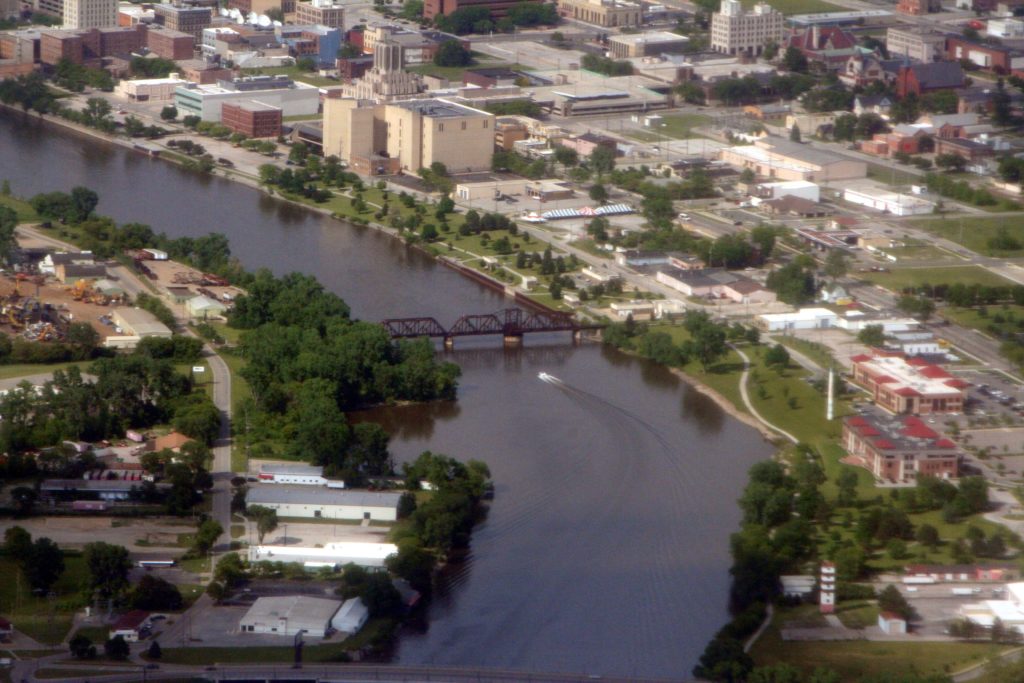In 2014, TIP Strategies worked with the East Michigan Council of Governments (EMCOG) to develop a Regional Prosperity Strategy for the eight-county East Central Michigan Prosperity Region (PR-5). One idea that emerged during the planning process—which engaged more than 300 business, community, and academic leaders—was the creation of a Center of Excellence (CoE) that would leverage the region’s higher education assets and industry strengths. In 2015, EMCOG tasked TIP with exploring potential areas of focus for a CoE with the goal of identifying a concept that could serve as a catalyst for job growth and investment while supporting the success of existing companies.
CoEs can take a variety of forms, but normally involve partnerships between colleges/universities and the private sector in order to spark innovation and knowledge creation within a narrow topic area. The participation of a consortium of partners, including higher education, industry, and others (such as government and nonprofits) is one of the three “ingredients” common to successful Centers identified as part of our work. The participation of multiple colleges and universities was also a common factor among CoEs studied for this work. And finally, the most successful CoEs are focused on a specific area of research, a particular industry segment, or a solution to a narrowly defined problem.
From an economic development standpoint, the objective of establishing a CoE is to build on regional higher education and industry strengths to support the growth of existing businesses, attract new investment, and draw in talent with specialized knowledge and skills. As a result, Centers of Excellence can have a number of benefits, including:
- Offering an important source of leadership and vision,
- Generating national and international recognition for a region,
- Serving as a repository for best practices, and
- Providing support and training for entrepreneurs and current and future employees in relevant industry sectors.
With the assistance of a task force comprised of more than a dozen of the region’s academic and business leaders, TIP helped EMCOG explore the possibility of creating a CoE in East Central Michigan around four potential concepts:
- Advanced Materials/Plastics: Exploring waste-heat-to-energy conversion and other products, processes, and technologies for the plastics manufacturing industry to spark innovation, cost savings, and spur the growth of a new industry cluster.
- Agriculture/Craft Breweries: Pursuing agri-tech entrepreneurship and innovation to support the growing craft breweries industry, potentially including shared processing facilities to serve multiple businesses across the region.
- Health Sciences: Aligning the region’s health care industry, workforce training efforts, and health sciences innovation programs to improve urban and rural community health.
- International Workforce: Enhancing the experience for international students through better connections to the region and its businesses, efforts to align workforce training programs, and marketing to international communities.
The resulting Centers of Excellence Action Strategy provides an overview of each concept along with a catalog of regional assets, best practice examples, and steps for implementation including immediate (next 100 days), short-term (through 2016), and long-term (2017 & beyond) actions. Each concept has a unique path for implementation and a distinct proposed structure. All four concepts were designed to address specific problems or to respond to a specific set of opportunities. Yet, despite their differences, each concept shares three key elements:
- The steps for implementation are focused on efficiency and quick results.
- Collaboration is the driving philosophy behind each concept.
- EMCOG’s participation as a convener and support organization will be essential in moving each concept forward.
Image credit: Downtown Saginaw Aerial by lora_313 via Flickr (CC BY 2.0)



